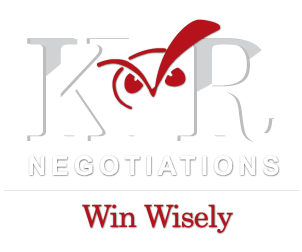Misusing Leverage: The High Cost of a Short-Term Negotiation “Win”
Do repeat business assumptions count in your business plan? If so, the way you conduct your negotiations takes on much greater importance.
Some view negotiation as a series of devious games and ego contests conducted to gain advantage by keeping the other side continuously off balance, intimidated or flustered. We find this approach to negotiation quite short-sighted if your “win” leaves the other side angry, resentful and questioning your credibility. Who wants to do more business with someone who makes them feel as if they have been bullied or tricked? The logical response will be to aggressively seek an alternative the next time around, whether you are a buyer, seller or “business partner.” That doesn’t sound like much of a win to us.
Our version of a win is where both sides understand and appreciate the value they received and are more likely to forge a long-lasting relationship that yields more and better opportunities in the future. This idea underpins K&R Negotiations’ Win Wisely™ approach and underlines the importance of using leverage wisely.
In our practice, leverage is the ability to persuade people to move closer to your way of thinking. You gain leverage from earning the credibility that comes with patience and listening and painstaking preparation—having a detailed understanding of the other side, their business goals and challenges, and what they are trying to achieve. Being able to offer a solution to their challenges in the form of a quantified value argument creates positive leverage. In fact, the difference between positive leverage and negative leverage is the difference between the other side coming to your conclusion voluntarily versus feeling like they have been forced to come to that conclusion.
In the mind of the negotiator looking for the short-term win, leverage is a weapon. Consider the classic case of a vendor who knows that they are in a “unique provider” position. They know that they are the only solution for a customer that has an urgent need and that the alternatives available are highly inferior. This looks like an opportunity to “force” the client to inflated terms and pricing. (“Take it or leave it!”) The customer may take it in the short term, but if you still want that customer to consider your solution when others become available, you’re facing an uphill battle. That’s why positive leverage is preferable. With positive leverage you do not give up the superior position that your leverage gives to you. Rather, you articulate it in terms of value to the other side. In this case you may gain it by articulating to the client the unique impact that your solution has on their business—an impact that far outweighs the price of the solution.
Likewise, showing some empathy and understanding for your customer’s position helps cement a more durable relationship. Instead of making your customers feel as if you are holding them hostage, remind them of the positive outcomes that will accrue with your solution. When you identify how those outcomes more than pay for the solution, also assure them that you will always treat them fairly where price and terms will relate to the value they receive. The take-it-or-leave-it approach is arrogant and incurs a loss of face with your customer—something they will remember the moment they have an alternative (even if that alternative is a poorer choice). The Win Wisely™ method is diplomatic and allows them to move toward you rather than create the impression that they’re being forced.
An interesting example occurred recently when one of our client’s Korean customers was resisting upgrading to a new software platform. The salesperson had already told the customer, “If you do not upgrade, your support and maintenance on the current platform will end 60 days from now.” Needless to say, the customer was extremely unhappy, especially since he also now had to face an internal issue. We suggested that the salesperson write a letter to the customer explaining that the new software had additional functionality that would assist the customer in developing new market opportunities that far exceeded the cost of making the change. This enabled the Korean customer to justify a business decision internally, thus saving face. The customer agreed, with some additional support from the software company in transitioning to the upgraded platform.
This does not mean that negative leverage should never be used; but even negative leverage should be exercised with rationale. For example, you may state, “Consider the consequences if you do not do this deal, and the negative impact on your business of _____.” When making a conscious decision on whether to use positive or negative leverage, always consider the consequences.
These two approaches mark not just the difference between positive and negative leverage—but the difference between a company that thrives from long-standing, lucrative relationships and a company with which people can’t wait to stop doing business.

